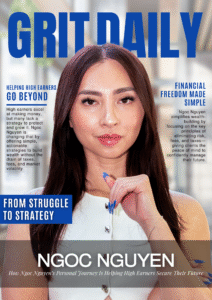In the quest to cultivate an inclusive culture among leadership teams, we’ve gathered fourteen valuable insights from CEOs, Founders, and HR experts. From ensuring everyone feels seen and heard to promoting psychological safety and innovation, these seasoned professionals share practices that champion diversity and foster a truly inclusive environment.
- Ensure Everyone Feels Seen and Heard
- Celebrate Diversity with Cultural-Themed Days
- Use Competency Assessments for Inclusive Hiring
- Value Diverse Thoughts and Perspectives
- Rotate Meeting Leadership for Inclusivity
- Emphasize Collaboration and Peer Support
- Introduce Cultural Competency Corners
- Integrate DEI in Decision-Making Processes
- Lead with Authenticity and Transparency
- Pursue Diversity of Thought
- Conduct Unbiased Recruitment Processes
- Develop Trust Through Bias Awareness Workshops
- Implement Inclusivity Scorecard Metrics
- Promote Psychological Safety and Innovation
Ensure Everyone Feels Seen and Heard
One of the main ways we foster inclusivity within the Oak Theory team is by making sure everyone isn’t just seen but also heard! The simplest and most effective way we accomplish this is by making space in every meeting for our team to share their unique perspectives and highlight their contributions.
Seeing our team encourage each other to be their authentic selves and bring their full creativity to the table never gets old! Oh, and I can’t forget to mention how proud we are to have put together a team that makes it easy to maintain that culture—people who aren’t just insanely talented, but, most importantly, come from such different backgrounds and have amazing character that perfectly aligns with our values.
 Veronica Shelton
Veronica Shelton
Co-Founder, Director of Creative & Technology, Oak Theory
Celebrate Diversity with Cultural-Themed Days
As Head of HR at Intellek, a global remote-working company, my department is tasked with creating initiatives to strengthen and celebrate our team’s cultural diversity.
For starters, and as standard, it’s our company policy to honor the public holidays in our team’s countries of residence, which currently consist of the UK, USA, Spain, South Africa, Canada, and Macedonia. Among our UK-based team, we have employees who hail from India and Africa, as well as others with roots in different countries.
We’ve also added an additional company public holiday of our own to celebrate Juneteenth Day, commemorating the final abolition of slavery during the US Civil War.
It is especially important for us, as remote workers, to keep finding new ways to connect across the miles. Not an easy task with employees in six different countries with varying time zones! So, team building is key for us to prevent feelings of isolation and disconnect.
I am implementing a new team-building initiative where we will celebrate the power of diversity with an annual cultural-themed day to showcase our heritages. We will share our homes, our backgrounds, and traditions with our colleagues.
The day will go something like this:
• A company-wide meeting in traditional costume, with a prize for the best outfit
• A Show and Tell Time Capsule – five things that encapsulate the lifebeat of your country
• A Brief History of My Country – make it entertaining, and there could be a prize to be won
• An International Recipe Exchange – take a photo of a dish you’ve cooked, and the one with the tastiest-looking dish gets a prize
• Traditional Folklore – a fascinating story from your country
• Music – play us something that reflects what your country is all about!
• Dance – demo a few steps from a traditional dance? For the brave at heart!
We look forward to a day of learning, sharing, giggling, and celebrating our diverse cultural heritage!
 Lisa Tucker
Lisa Tucker
Head of HR & Communications, Intellek
Use Competency Assessments for Inclusive Hiring
A practice that has helped our leadership team create an environment where diversity is valued and celebrated is the incorporation of competency assessments as part of our hiring process. Competency assessments allow us to objectively measure candidates based on job-related behaviors that promote inclusivity.
For example, a candidate who scores highly on their ability to seek collaborative approaches can translate into a leader who seeks out varying opinions and skill sets—leading to an inclusive culture. Competency assessments have the added benefit of high objectivity, allowing for the selection of the leadership team itself to be inclusive and diverse!
 Linda Scorzo
Linda Scorzo
CEO, Hiring Indicators
Value Diverse Thoughts and Perspectives
As a Leadership Strategist, I work with clients to leverage the intrinsic diversity of individuals and teams. We foster a culture where diverse thoughts, problem-solving approaches, and perspectives are not only sought but valued. Conflicting views are encouraged and safely explored, avoiding a “we vs. them” mindset and focusing on appreciating each person’s unique contributions.
This transcends traditional compromise, fostering a collaborative environment where collective diversity drives innovative solutions and superior organizational outcomes. We aim for broader goals like continuous learning, mutual respect, trust, and true collaboration, enhancing team dynamics and innovation, ensuring all voices contribute to decision-making and honoring the depth of “who” team members are.
 Cheryle Hays
Cheryle Hays
Founder & CEO, InPower Strategists
Rotate Meeting Leadership for Inclusivity
Creating an inclusive culture within my leadership team is not just a goal, but a fundamental aspect of how we operate. One practice that has been particularly effective in fostering inclusivity is our approach to team meetings.
We schedule meetings well in advance to give team leaders time to prepare and share their insights. This respects their time and acknowledges their input. We also hold frequent meetings to stay aligned and address issues promptly. Regular check-ins help us stay on top of our goals while having a sense of unity.
During these meetings, we ensure everyone has a chance to speak, valuing diverse perspectives regardless of background. We embrace the concept of “two heads are better than one.” After each meeting, we summarize key points and share notes transparently with the team. This practice also ensures that everyone is kept in the loop.
Lastly, we rotate meeting leadership to empower different voices and provide leadership opportunities. Allowing everyone to take a turn helps make everyone feel included, valued, and important in our company—because they are!
 Scott Levene
Scott Levene
Owner, Levco
Emphasize Collaboration and Peer Support
One practice that has significantly contributed to creating an environment where diversity is valued and celebrated is our emphasis on collaboration and peer support. We really value the importance of each other and the opinions people can bring to the table, which is why we work so hard on creating a team that truly feels like one.
This is then reflected in making sure that diverse perspectives are heard and valued, and we maintain a practice of open and honest communication. Having an approach like this ensures that we all value individual contributions and also encourages a culture of inclusivity and respect.
I hope this is helpful for your article; let me know if you need any more information or if there is anything else I can elaborate on for this article.
 David Janovic
David Janovic
Founder & CEO, RJ Living
Introduce Cultural Competency Corners
Working in an outsourcing company means navigating the exciting interplay of Western and Eastern cultures within our leadership team, which is why fostering an inclusive environment is crucial for optimal performance.
Here are the things that we have been doing to make things work:
In each leadership meeting, we dedicate a short segment to a “Cultural Competency Corner.” During this segment, a designated leader will present a specific cultural concept or practice from their background relevant to our business operations (e.g., negotiation styles, communication etiquette for certain holidays, or decision-making frameworks). We encourage open discussion and respectful exploration of the presented concept to foster team learning and dismantle cultural assumptions.
Through Cultural Competency Corners, we can gain valuable insights into each other’s cultural perspectives, leading to better collaboration, reduced stereotypes, clearer communication, and a celebration of our diverse backgrounds within the leadership team.
If you want to implement this strategy, you have to ensure all voices are heard and valued. Leaders should practice active listening and ask clarifying questions during presentations, with the responsibility of facilitating the Cultural Competency Corner rotating among team members. By implementing this practice alongside your existing focus on clear communication, you’ll be well on your way to building a truly inclusive leadership team that thrives in a bi-cultural environment.
 Ernest Yap
Ernest Yap
Digital Marketer and Offshoring Success Advocate, Shore360, Inc.
Integrate DEI in Decision-Making Processes
At Ohana Behavioral Health, fostering an inclusive culture within our leadership team is essential to our mission and values. Here are some key practices we use to ensure diversity is valued and celebrated:
1. Regular Conversations and Consultations: We engage in ongoing conversations and consultations with our team about diversity, equity, and inclusion (DEI). These discussions allow us to understand and appreciate the diverse backgrounds and experiences of both our staff and clients. By continually talking about DEI topics, we keep these values at the forefront of our minds and actions.
2. Open Dialogue and Feedback: We actively encourage open communication among our leadership team. This involves creating a safe space where team members feel comfortable sharing their thoughts, experiences, and concerns related to diversity and inclusion. Regular meetings and feedback sessions help ensure that every voice is heard and valued.
3. Inclusive Decision-Making: We integrate diversity and inclusion into all our decision-making processes. Whether we are recruiting new team members, developing policies, or planning community outreach initiatives, we prioritize inclusivity. This approach ensures that diverse perspectives are considered and that our actions reflect our commitment to equity.
4. Diverse Representation: We strive to have a leadership team that reflects the diversity of the community we serve. By bringing together leaders with varied backgrounds and experiences, we can better understand and meet the needs of our clients.
5. Mentorship and Support: We provide mentorship and support programs to help develop diverse leaders within our organization. By investing in the growth and development of all team members, we create pathways for diverse voices to rise within our leadership structure.
By implementing these practices, we cultivate an environment where diversity is genuinely valued and celebrated, ensuring that every member of our team feels respected, supported, and empowered to contribute to our shared goals.
 Daisy Vergara
Daisy Vergara
CEO & Founder, Therapist for Women and Young Children, Ohana Behavioral Health
Lead with Authenticity and Transparency
To foster an inclusive culture within your leadership team, skip the fluff and lead with authenticity by being transparent and showing both strengths and weaknesses. It’s one thing to encourage transparency, but it’s also important to establish boundaries to maintain respect and professionalism.
Create safe spaces for open dialogue and ensure there is a reciprocal flow of active listening and awareness. We have open discussions about what works well and the challenges or difficulties we face. It is important to include each team member’s perspective and align the team around shared goals to foster unity.
 Chenadra Washington
Chenadra Washington
CEO, Founder, Black Orchids PR
Pursue Diversity of Thought
You have to first agree on what diversity means. Too often, HR will hyper-focus on external characteristics such as race and gender. However, if you’re not careful, you could end up with a leadership team that looks different but thinks and acts the same. To avoid this, companies should pursue diversity of thought by ensuring their talent brand, hiring, and onboarding processes are attractive to people of different communication, learning, and leadership styles. For example, if your process unintentionally favors extroverts, you’ll likely miss out on introverts of all backgrounds who could make a real contribution to the team.
You also have to be honest about why you’re chasing diversity. If it’s merely a marketing campaign, i.e., “LGBTQ candidates strongly encouraged to apply,” you’ll fail on two fronts. The targeted group will see through the charade and feel used, and other groups will opt out, thinking that they are unwelcome.
Remember, inclusion only works if everyone is included. Instead of playing favorites and trying to game the system, focus on business results by building a culture that transparently rewards performance and values contribution. Process and practice drive culture. Once people focus on results, the noise falls away.
 Tim Toterhi
Tim Toterhi
CHRO, Plotline Leadership
Conduct Unbiased Recruitment Processes
Fostering an inclusive culture is essential for a positive organizational environment. It can help increase employees’ confidence and even boost their productivity and creativity.
My initiative started with conducting an unbiased recruitment process to promote inclusion in the organization during its inception phase. We hired managers or team leads from diverse backgrounds. Hence, it displays to all our employees that we provide opportunities based on skill and talent, not by caste or race. Furthermore, we have a zero-tolerance policy for discrimination and even discussion regarding caste, culture, and race.
We conduct an Inclusive Leadership program while onboarding new joiners to promote a safe, inclusive workplace culture. It helps us foster a cordial relationship within our workspace where everyone is appreciated and valued.
 Pratik Potnis
Pratik Potnis
Founder, TRIOS Coworking
Develop Trust Through Bias Awareness Workshops
When we work with leadership teams that want to create a more inclusive culture within their leadership team, they often want to extend inclusivity into the organization as a whole. Starting with the leadership team is smart because top-level leadership sets the tone for the entire company.
Fostering an inclusive culture within a leadership team requires a level of openness that comes first from creating a trusting environment. We typically start with workshops to help everyone develop a deeper awareness of unconscious biases that might impact decision-making and team dynamics. These workshops also help to create an environment of continuous learning, growth, and development. Then we encourage the team to engage in open dialogue, to better facilitate the sharing of ideas and perspectives without fear of judgment.
Individually, we coach leaders to develop crucial skills like listening, equitable decision-making, and empathy, while helping the team develop scaffolding for ensuring all voices are heard and valued.
With one of our client companies, we held regular workshops for the leadership team that focused on inclusivity and the value of diverse voices and coached the team to create meeting practices that would encourage equitable participation and openness.
Over time, this team not only helped to foster a more inclusive culture company-wide but also saw tangible improvements in employee engagement and morale scores, as well as increased productivity and innovation, which are often hallmarks of these kinds of changes.
 Susan Baroncini-Moe
Susan Baroncini-Moe
Executive Coach, Baroncini-Moe Executive Coaching
Implement Inclusivity Scorecard Metrics
Leadership teams must have scorecard metrics to track inclusivity—measurement drives performance. Inclusive metrics can include year-over-year satisfaction survey results, retention rates, reverse-mentoring initiatives, employee resource groups, and promotion and pay audits, to name just a few recommended practices.
 Loren McCray
Loren McCray
Chief Brand Marketing Officer, Mc2
Promote Psychological Safety and Innovation
To cultivate an inclusive culture within our leadership team, we, as a talent and culture solutions firm, prioritize creating an ethos where everyone feels equal, has access to opportunities, and experiences psychological safety.
One effective approach is implementing our cultural belief, B.E.S.T., which stands for Brand Stewardship, Worth Every Action, Stronger Together, and Trailblazers. This framework encourages team members to share their ideas openly and take calculated risks, knowing they won’t face judgment.
This not only promotes innovation but also improves decision-making processes within. By annually reviewing and refining these principles, we ensure they continue to promote inclusivity and supportiveness.
Moreover, prioritizing psychological safety has been instrumental in this journey, enabling both the organization and individuals to navigate hurdles confidently. This commitment has proven invaluable in celebrating diversity and ensuring every team member feels valued and heard.
 Dhruva Somani
Dhruva Somani
Associate Consultant, NamanHR








